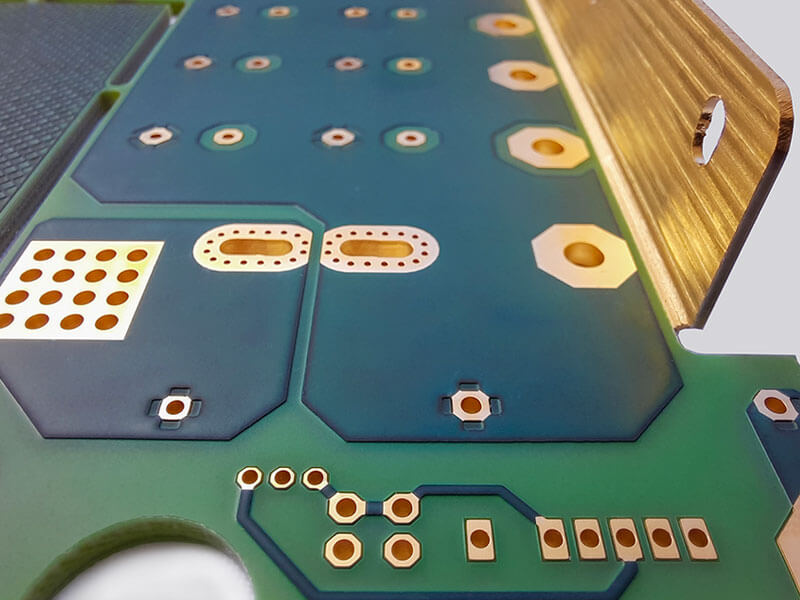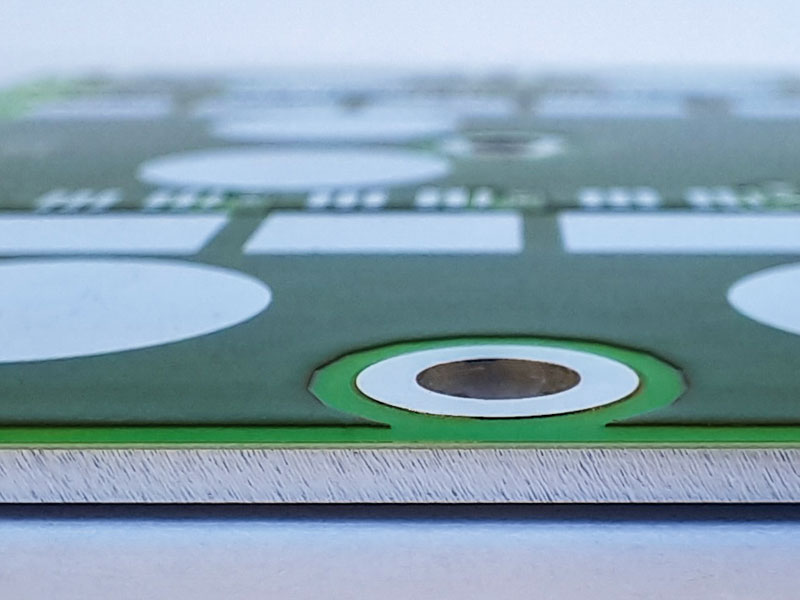Flex- and rigidflex-PCB
Home > PCB > Special types PCB > Flex & rigid-flex PCB
Flex-PCB
Flex PCB are used as an alternative to conventional rigid PCB primarily where the PCB is exposed to dynamic loads in application. Furthermore, the technology offers space, weight and cost savings at the assembly level. These advantages are used, for example, in medical technology, telecommunications and industrial electronics.
At Becker & Mueller, a wide variety of base materials, insulation options and technologies are available to you, with which we manufacture double-layer Flex PCB up to 427 x 884 mm . Please contact us for your special requirements!

Rigid-flex PCB
Advantages of Flex- and Rigidflex-PCB
- simplified assembly
- favoring the miniaturization of the assembly
- increase of mechanical and dynamic load capacity
- increase of reliability (by reducing potential sources of error)
- cost reduction at the assembly level by saving additional components (e.g. connection components)
Rigid-flex vs. semi-flex PCB
Our PCB special types

Rigid-flex and semi-flex
Rigid-flex PCB are used when the PCB in the operation is exposed mechanical movement or vibrations, also if spatial conditions do not allow any other solution.
Becker & Müller is one of the specialized manufacturers of rigid-flex and semi-flex PCB and with this development competence we like to already be available for our customers in the development phase.

High-Frequency
High-frequency PCB (HF) are used wherever fast signal flows and thus high transmission frequencies are required. In order to ensure the integrity of the high-frequency signal flows at the highest possible frequency, the permissible parameters must be precisely determined and implemented. We at Becker & Müller are your competent manufacturer and development partner in this regard.

Impedance-controlled
Impedance-controlled PCB are used at high frequencies and steep switching edges to ensure signal integrity. Reflections can cause signals to superimpose, which can lead to errors and unreliability of the entire assembly. Becker & Müller is your specialist for the production of impedance-controlled PCB.

High-TG
Compared to standard FR4 materials, high-TG materials have a higher temperature resilience. These materials are used wherever the PCB is exposed to particular temperature or current loads and a higher continuous operating temperature is required for the reliability of the PCB.

Thick-copper
The accommodation of power electronics and the associated extremely high current intensities require special specifications of the carrier circuit boards. We at Becker & Müller have customized solutions for the production of high-current/thick copper PCB.

IMS PCB (aluminum core)
Aluminum core PCB – also known as IMS (Insulated Metallic Substrates) – are used for mechanical loads, but primarily for thermal loads. The core of the PCB consists entirely of aluminum and is separated from the conductor pattern by an insulation layer.

Special Service PCB
Edge metallization (PTH-contour), special contours, countersinks and depth millings, blind vias, buried vias, plugs, special surfaces or colored solder masks, silk screen, coverlay and bluemask, plugging and more: We at Becker & Müller are the ideal manufacturer and development partner when it comes to very special types of PCB.




